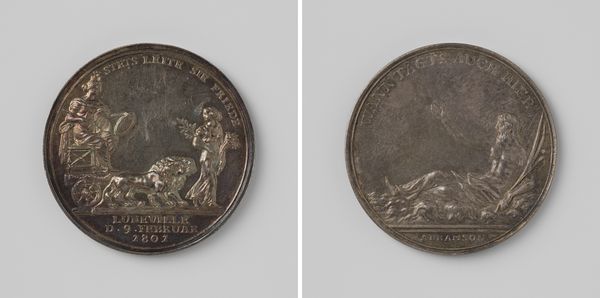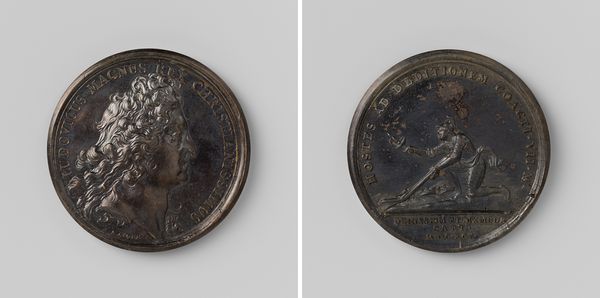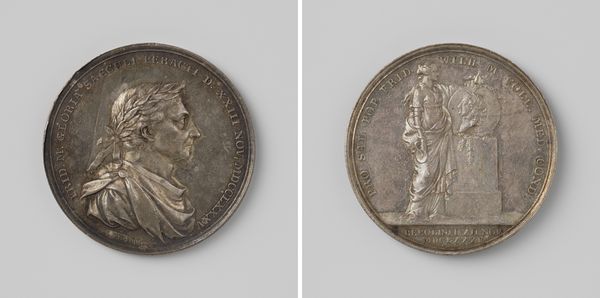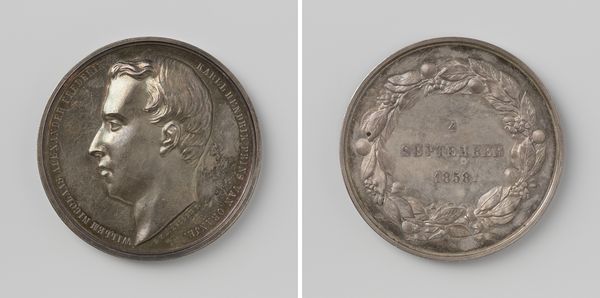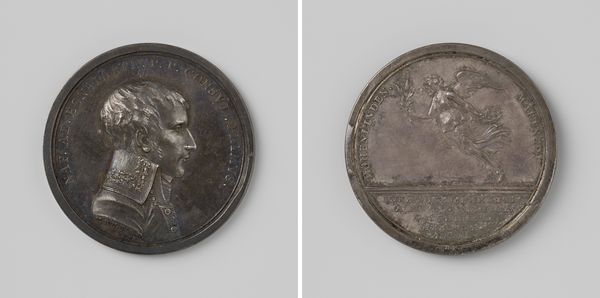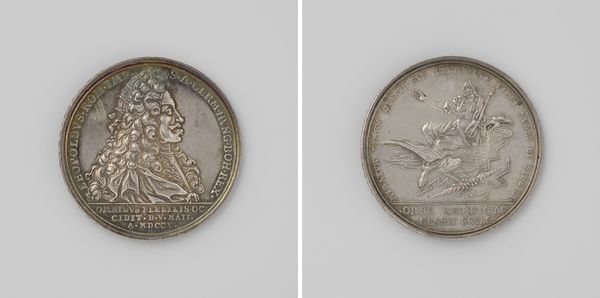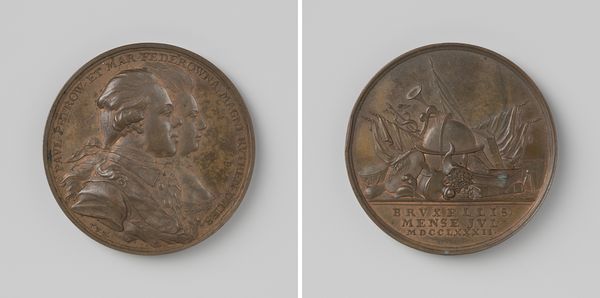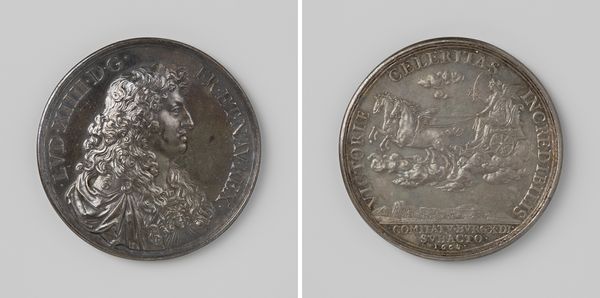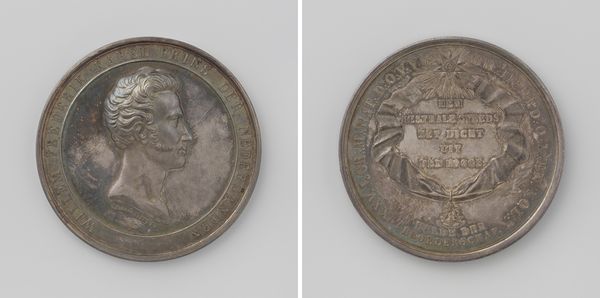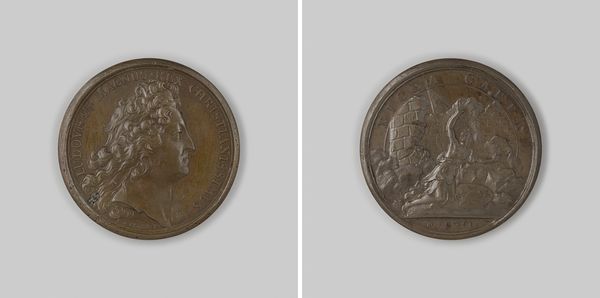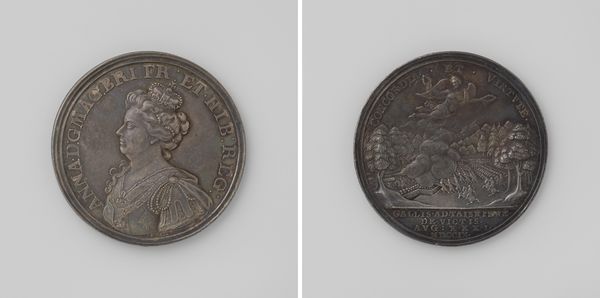
Dimensions: diameter 3.9 cm, weight 220 gr
Copyright: Rijks Museum: Open Domain
Editor: This metal sculpture, crafted by Theodorus Victor van Berckel in 1773, is titled "Afschaffing van de orde der Jezuieten door paus Clemens XIV"—or, in English, "Abolition of the Order of the Jesuits by Pope Clement XIV". The contrasting sides make me wonder about the complexities involved. What’s your interpretation of the symbolism? Curator: This medal speaks volumes about power, politics, and the Church in the 18th century. On one side, we see Pope Clement XIV, a clear statement of authority. The other side shows an allegorical figure, and inscription. Do you see how this references and legitimizes a specific historical event—the suppression of the Jesuits? Editor: Yes, it's fascinating how a small object like this carries so much weight. It's a physical manifestation of a major political and religious decision. So, this was like propaganda in its time? Curator: Precisely. Medals like these were often commissioned to publicly commemorate or justify actions, shaping public opinion and solidifying power. It raises questions about the Church's relationship to socio-political change during the Baroque period. Who benefited, and how was it distributed to the masses? Editor: That’s so interesting! I hadn't thought about it that way. Seeing it as a piece of historical propaganda really opens my eyes to its cultural significance. Curator: It makes you consider how imagery functions within specific institutional frameworks. Next time you see a work, consider who is displaying the work, how it is viewed by the public, and its greater impact to society. Editor: Thanks, this has really changed how I look at art! Curator: My pleasure, let's continue this conversation, sometime!
Comments
No comments
Be the first to comment and join the conversation on the ultimate creative platform.

